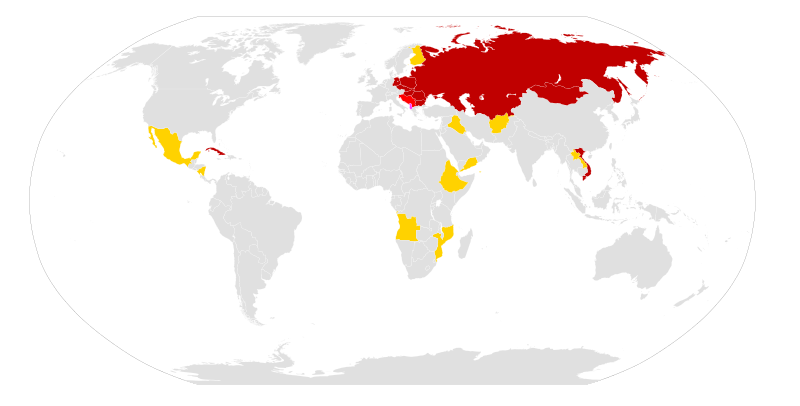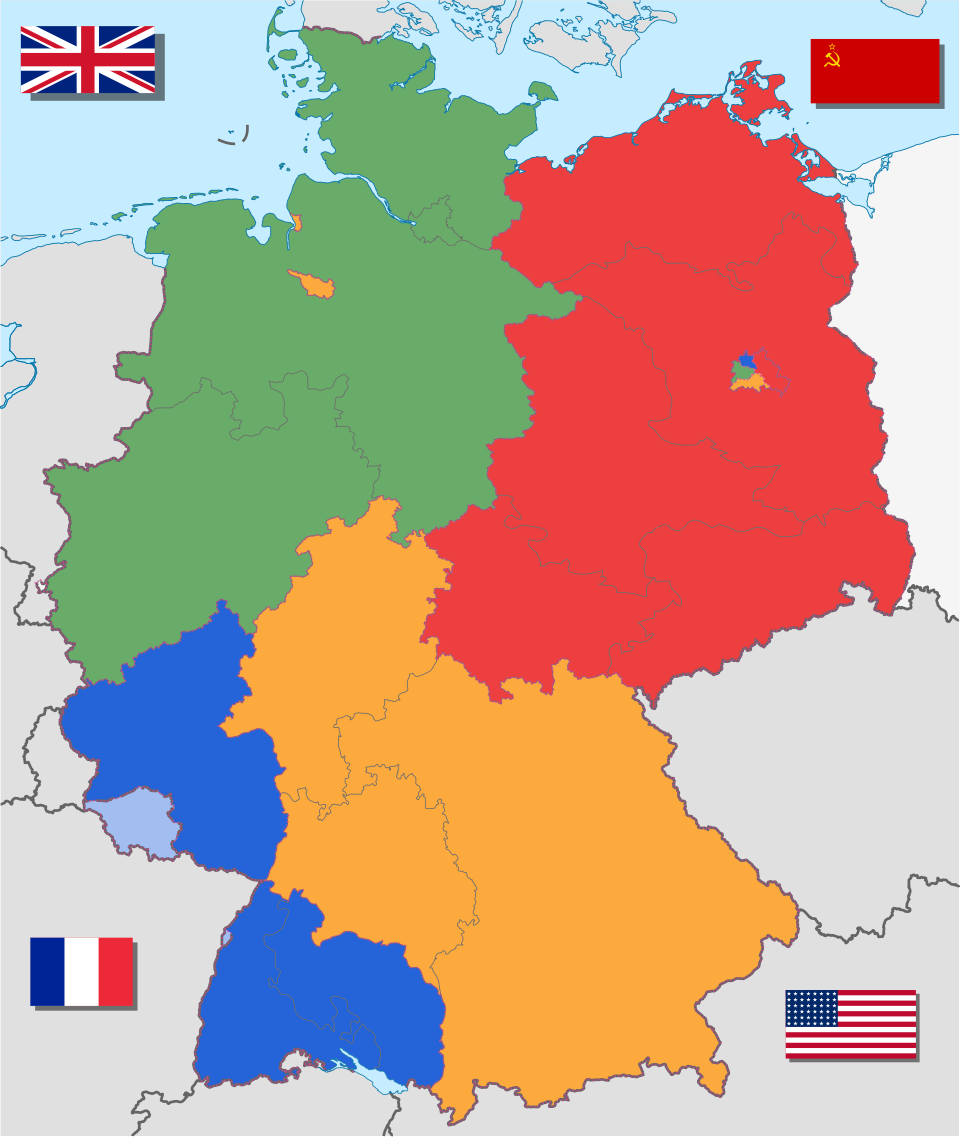OCR Specification focus:
‘Cominform and Comecon; conflicts over Germany including the Berlin blockade and airlift’
The period 1946–1955 marked a decisive escalation of Cold War tensions, with competing economic organisations and the Berlin Blockade highlighting stark divisions in Europe.
Cominform
Establishment and Purpose
The Communist Information Bureau (Cominform) was established in September 1947. It was designed by Joseph Stalin as a mechanism to strengthen Soviet control over the communist parties of Eastern and Western Europe.
Cominform: The Communist Information Bureau, an organisation set up to coordinate communist parties across Europe under Soviet direction.
Cominform allowed Moscow to:
Monitor and direct communist movements in Europe.
Ensure loyalty from satellite states such as Poland, Hungary, and Czechoslovakia.
Spread propaganda opposing Western influence and Marshall Aid.
Purge parties of those deemed insufficiently loyal to the Soviet line.
The creation of Cominform represented a clear sign that the Soviet Union was moving away from wartime cooperation and towards consolidating ideological and political control.
Impact
Communist parties in France and Italy were instructed to oppose participation in the Marshall Plan.
National governments in Eastern Europe had their autonomy curtailed, with Moscow dictating political and economic strategies.
The organisation deepened East–West mistrust, signalling that Stalin would resist any independent path within Eastern bloc states.
Comecon
Formation and Goals
In January 1949, the Soviets created Comecon (Council for Mutual Economic Assistance). This body was the economic counterpart to Cominform, aimed at providing an alternative to the Marshall Plan.

World map showing Comecon member states and observers. It illustrates the bloc’s geographic spread and supports discussion of economic integration as a counter to Marshall Aid. The legend includes later observers beyond the 1949–1955 focus. Source
Comecon: The Council for Mutual Economic Assistance, an economic organisation established to integrate Eastern European economies and tie them to the Soviet Union.
The key purposes of Comecon were:
To bind Eastern European economies into the Soviet orbit.
To prevent states such as Czechoslovakia or Hungary from accepting Western aid.
To establish economic specialisation across the Eastern bloc, ensuring reliance on Soviet markets.
Outcomes
Economic interdependence meant the USSR could exploit Eastern resources while supplying industrial goods.
Western propaganda described Comecon as evidence of Soviet imperialism.
It solidified the division of Europe into two distinct economic spheres.
Conflicts Over Germany
Post-war Division
Germany remained a central issue in the Cold War. After 1945, it was divided into four occupation zones controlled by the USA, UK, France, and USSR.

A labelled map of Allied occupation zones in Germany, valid for 8 June 1947 – 22 April 1949. It visualises the British, American, French and Soviet zones, contextualising later conflict over currency reform and governance. Source
Disagreements over its future fuelled tensions:
Western Allies favoured economic recovery and democratic reconstruction.
Stalin demanded reparations and sought to prevent a strong, united Germany that could threaten the USSR again.
Steps Toward Separation
In 1947, the British and American zones were merged into Bizonia for economic efficiency.
In 1948, the French zone joined, forming Trizonia, signalling Western intent to build a prosperous, united West German state.
The introduction of the Deutsche Mark currency in the Western zones and West Berlin angered Stalin, who viewed it as a violation of agreements.
The Berlin Blockade and Airlift
Causes
The Berlin Blockade (1948–1949) was the first major crisis of the Cold War. Stalin closed all road, rail, and canal access to West Berlin in June 1948. His aims were to:
Force the Western Allies out of Berlin.
Halt the integration of Western zones.
Demonstrate Soviet power and undermine Western resolve.
The Airlift
The Western Allies responded with the Berlin Airlift (June 1948 – May 1949), supplying West Berlin entirely by air.
US and British planes delivered food, fuel, and medicine.
At its height, flights were landing every few minutes.
Over 2.3 million tonnes of supplies were delivered.
The airlift demonstrated Western determination not to yield to Soviet pressure and became a powerful propaganda victory for the USA and its allies.
Consequences
Stalin lifted the blockade in May 1949, having failed to force concessions.
The crisis hardened the division of Germany:
Federal Republic of Germany (West Germany) was officially created in May 1949.
German Democratic Republic (East Germany) followed in October 1949 under Soviet control.
The crisis led to the creation of NATO in 1949, institutionalising Western military cooperation.
It set the precedent for future Cold War confrontations where indirect methods, rather than direct war, were employed.
Key Points to Remember
Cominform: Political control, loyalty enforcement, and propaganda coordination.
Comecon: Economic integration of Eastern bloc, countering Western Marshall Aid.
Germany: Became the Cold War’s focal point, with economic and political tensions escalating into direct confrontation.
Berlin Blockade and Airlift: First major Cold War conflict, cementing East–West division and confirming Berlin’s symbolic importance.
FAQ
Yugoslavia, under Tito, initially joined Cominform but was expelled in 1948 after resisting Soviet control. This created the first open split within the communist world.
Tito’s refusal to accept Moscow’s dominance showed that not all socialist states were subservient to Stalin. Yugoslavia went on to pursue its own model of socialism and later balanced ties with both East and West.
Comecon encouraged each member state to focus on industries where they had existing strengths.
East Germany specialised in engineering and heavy industry.
Hungary developed chemicals and pharmaceuticals.
Bulgaria was directed towards agriculture and electronics.
This created interdependence, but critics argued it also entrenched reliance on the Soviet Union, which often exploited raw materials from its allies.
The new currency, launched in June 1948, symbolised Western plans to stabilise and rebuild the German economy.
The Soviets saw it as:
A unilateral move, breaking four-power agreements.
A sign that the West intended to establish a separate West German state.
A direct challenge to Soviet authority in their zone and in Berlin.
This was a trigger for the Berlin Blockade, as Stalin tried to reassert control
Despite shortages, Berliners in the Western sectors largely welcomed the Airlift. Crowds often gathered to cheer arriving planes, nicknaming American aircraft “raisin bombers” for dropping sweets.
Daily life remained difficult with rationing and power cuts, but the sustained Western commitment built morale. The experience deepened Berlin’s symbolic status as a frontline city in the Cold War.
For the United States and its allies:
That collective resolve and superior logistics could counter Soviet pressure.
That Western Europe needed formal defence arrangements, leading directly to NATO.
For the Soviet Union:
That blockades and indirect pressure had limits.
That open confrontation risked uniting the West more firmly.
Both sides realised Berlin would remain a volatile flashpoint throughout the Cold War.
Practice Questions
Question 1 (2 marks)
In which year was the Council for Mutual Economic Assistance (Comecon) established, and what was its main purpose?
Mark Scheme:
1 mark for correctly identifying the year 1949.
1 mark for correctly stating its main purpose: e.g., to integrate Eastern European economies and tie them to the Soviet Union / provide a Soviet alternative to Marshall Aid.
Question 2 (6 marks)
Explain two reasons why the Berlin Blockade (1948–1949) increased Cold War tensions between East and West.
Mark Scheme:
Up to 3 marks for each reason explained (2 marks for a valid point, 1 additional mark for clear explanation or development).
Possible reasons include (but are not limited to):
It represented the first direct confrontation between the superpowers, showing Stalin’s willingness to use force (2 marks). Explanation that it deepened mistrust and led to a more permanent division of Germany (1 mark).
The Western response through the Berlin Airlift demonstrated determination not to give in to Soviet pressure (2 marks). Explanation that this propaganda victory strengthened US prestige and hardened East–West rivalry (1 mark).
The crisis directly contributed to the creation of NATO in 1949 (2 marks). Explanation that this institutionalised military opposition to the USSR (1 mark).
Maximum: 6 marks.

